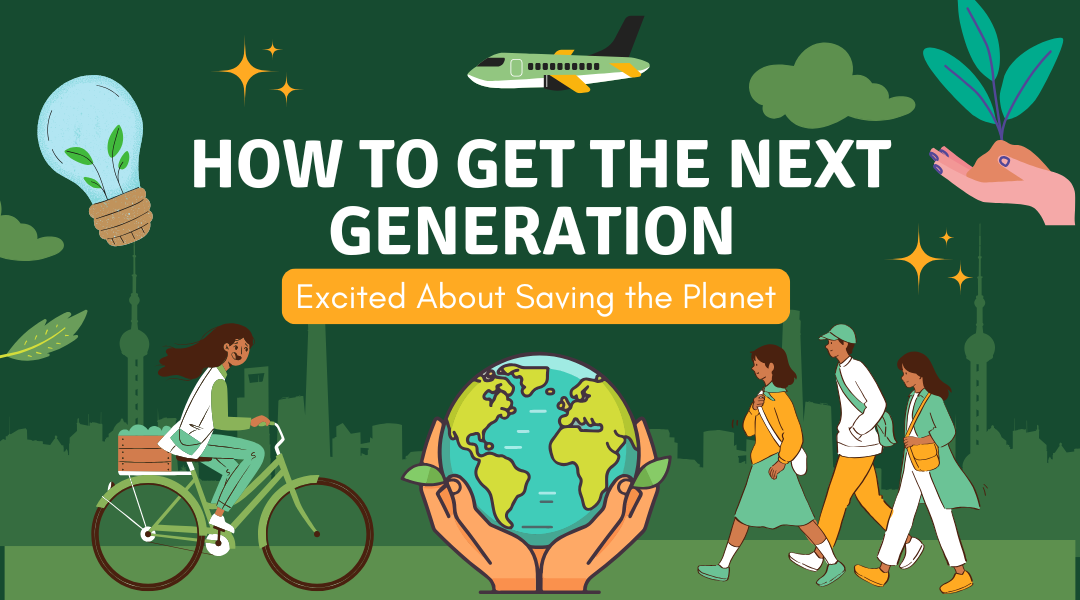Telling kids to “reduce, reuse, and recycle” isn’t exactly setting their world on fire. For the generation that will inherit our environmental challenges, we need a far more compelling call to action. The goal isn’t just to teach them what a recycling bin is; it’s to ignite their innate creativity and sense of justice, turning them into passionate advocates for a planet that deserves a future. Engaging young people in sustainability isn’t about adding to their homework—it’s about unlocking their potential to be the innovators, explorers, and problem-solvers we so desperately need.
From Boring to Brilliant: Making Waste Management Click
The key is to move from abstract lectures to hands-on missions that show immediate, tangible results.
- The School as a Spy Mission: Instead of a lesson on landfills, turn the school into a “Waste Audit HQ.” Equip students with clipboards and gloves to investigate the school’s trash, categorizing the “evidence.” How many juice boxes are thrown away daily? What percentage of the cafeteria’s waste is food? This detective work makes the problem real and empowers them to propose their own “Mission: Reduction” plans based on the data they’ve uncovered.
- Gamify the Everyday: Launch a semester-long inter-class competition with a real, meaningful prize—like the winning class getting to choose a new piece of playground equipment made from recycled materials. Points are awarded for the least amount of waste per student, the most creative upcycled art project, or the best-designed campaign to eliminate single-use plastic bottles from the school. This taps into their competitive spirit and collaborative nature.
Tapping into the Inner Innovator
Young people aren’t just students; they’re digital natives and natural-born creators. We can channel that energy into building real-world solutions.
- The Green-Tech Garage: Set up a “Green Innovators” lab where students can tinker with technology. Challenge them to build a functional water filter from recycled materials, design a phone app that identifies local recycling rules using the camera, or use a 3D printer to create new products from collected plastic bottle caps. This shows them that “green tech” isn’t a distant concept—it’s something they can build in their own classroom.
- From Problem to Prototype: Host a “Shark Tank”-style innovation fair focused on waste. Students can develop business models for a service that repairs broken electronics, design a new type of compostable packaging, or create a marketing campaign for a local thrift store. This teaches them that solving environmental problems can also be a viable and exciting career path.
Cultivating the Conscious Explorer
Sustainability isn’t just about what happens at home; it’s a global ethic. We can shape how the next generation interacts with the world.
- Become Destination Detectives: In a social studies class, have students research a popular tourist destination. But instead of just its attractions, they must investigate its environmental challenges: Where does the plastic waste go on a tropical island? How does a historic city handle the influx of visitors? Their project is to create a “Responsible Travel Guide” for that location, highlighting eco-friendly hotels, local conservation projects tourists can support, and tips for minimizing their footprint.
- Adopt a Global Ecosystem: Partner with a school in a different country or biome (e.g., a rainforest, a coral reef). Through video calls and shared projects, students learn firsthand how waste from one part of the world affects another. A class in the Midwest can learn how their plastic waste might end up in the ocean, impacting the marine ecosystem their partner school is studying. This builds empathy and a powerful sense of global interconnectedness.
The Ripple Effect: When Kids Lead the Way
Perhaps the most powerful aspect of engaging youth is the undeniable influence they have on the adults around them. A child who is genuinely excited about composting will pester their parents until they start a bin at home. A teenager who designs a clever upcycled product can inspire their whole neighborhood to see “trash” differently. They become the moral compass and the energetic engine driving change in their own families and communities, often shaming the older generation into action.
Conclusion: Not Just Lessons, But a Legacy
Engaging children and youth in sustainable practices is not another box to tick on the educational checklist. It is a strategic investment in our collective survival. When we give them not just facts, but agency—when we frame sustainability as an adventure, a creative challenge, and a civic duty—we do more than just teach them. We unleash them.
We are cultivating a generation that won’t just use a recycling bin but will question why we need disposable products in the first place. A generation that won’t just be tourists, but guardians of the world’s wonders. By trusting them with these challenges today, we are handing over the tools to build a tomorrow that is not just less wasteful, but more imaginative, more equitable, and more resilient than the world we know now. The revolution won’t be televised; it will be prototyped in a middle school science fair and launched from a high school coding club.
